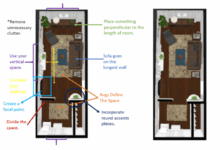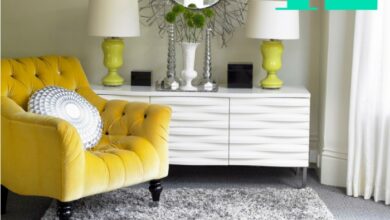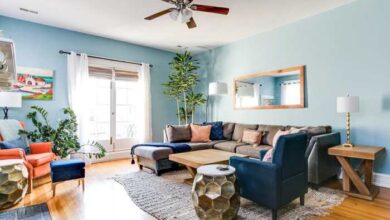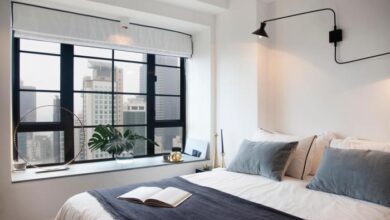How To Pick The Right Curtains For Each Room
Choosing the perfect curtains can transform any room, making it feel more welcoming and complete. How to Pick the Right Curtains for Each Room is a journey into understanding how fabric, color, size, and style come together to create harmony in your living space.
From the delicate sway of sheer fabrics to the bold statement of blackout curtains, each choice can influence the mood and functionality of a room. By exploring various materials, colors, and styles, you can ensure that your curtains not only enhance the beauty of your space but also serve practical purposes like light control and insulation.
Choosing the Right Fabric for Curtains
Selecting the perfect fabric for your curtains is essential to achieving the desired ambiance and functionality in each room. Different fabrics bring unique characteristics that can influence light control, privacy, and the overall aesthetic of your space. This guide will explore the various fabric options available, helping you make an informed decision that aligns with your home decor and lifestyle needs.
Characteristics of Different Curtain Fabrics
Understanding the distinct qualities of various curtain fabrics can greatly impact your choice. Below are some popular curtain materials:
- Cotton: A versatile and breathable fabric, cotton curtains offer a casual and inviting look. They are easy to clean and available in a wide array of colors and patterns, making them suitable for living rooms and bedrooms.
- Silk: Luxurious and elegant, silk curtains create a sophisticated atmosphere. Their natural sheen adds richness to any room. However, silk requires careful maintenance and is best used in spaces with controlled sunlight exposure.
- Polyester: Durable and low-maintenance, polyester curtains resist wrinkles and fading, making them ideal for high-traffic areas such as kitchens and children’s rooms. They also come in various textures and styles.
Influence of Fabric Weight on Light Control and Privacy
The weight of the fabric plays a crucial role in how much light it filters and the level of privacy it provides. Heavier fabrics, such as velvet or thick cotton, offer greater light-blocking capabilities and enhanced privacy, making them suitable for bedrooms and media rooms. Lighter fabrics, such as sheer polyester or linen, allow natural light to flow while providing a soft, airy feel; they are perfect for living spaces or sunrooms where you want to invite sunlight without sacrificing too much privacy.
“Heavier fabrics enhance privacy and light control, while lighter fabrics create a breezy, illuminated atmosphere.”
Importance of Fabric Durability for Various Rooms
Durability is an essential consideration when selecting curtain fabrics, especially in areas prone to wear and tear. For instance, kitchens and playrooms benefit from durable polyester curtains that can withstand spills and stains. In contrast, lightweight fabrics may be more appropriate for decorative uses in less-trafficked spaces, like formal dining rooms. Here are some practical considerations:
- Living Rooms: Choose durable yet stylish fabrics like cotton blends that can endure daily use while maintaining aesthetic appeal.
- Bedrooms: Opt for heavier fabrics that provide privacy and promote a peaceful atmosphere, such as blackout curtains made from thick polyester or cotton.
- Kitchens: Lightweight, easy-to-clean fabrics like synthetic blends work best, as they can handle humidity and frequent washing.
- Bathrooms: Moisture-resistant materials such as polyester are advisable to prevent mold and damage from humidity.
Color and Pattern Selection
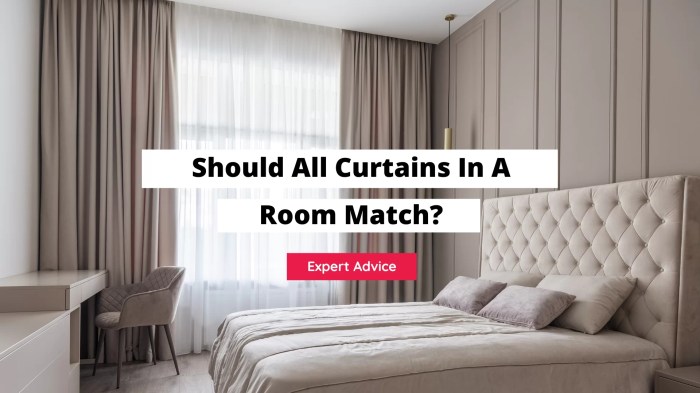
Source: craftsonfire.com
Selecting the right colors and patterns for your curtains is an essential step in creating a harmonious and inviting atmosphere in your home. The right choices can enhance your existing décor while also influencing the overall mood of each room. Understanding how to blend colors and patterns effectively will go a long way in elevating your space and making it feel complete.When it comes to choosing colors, it’s crucial to consider the existing color palette of the room.
Complementary colors can create a cohesive look, while contrasting colors can add a bold statement. You can achieve a balanced and aesthetically pleasing environment by following these guidelines:
Color Harmony with Room Décor
Incorporating the right colors into your curtains can significantly impact the overall feel of a room. Here are some strategies to consider:
- Consider the Color Wheel: Use the color wheel to identify complementary colors. For instance, if your walls are painted in soft blue, curtains in a warm coral or peach can create a stunning contrast.
- Choose Shades from Existing Elements: Pull colors from other decorative elements in the room, such as cushions, artwork, or rugs. This helps to create a unified look that feels thought out and intentional.
- Neutral Bases: If your room already has a lot of color, a neutral curtain color—like beige, gray, or white—can give the space balance while still allowing other colors to shine.
- Seasonal Adjustments: Consider how a color scheme may change with the seasons. Light, airy colors may feel appropriate in spring and summer, while richer, darker tones can create a cozy feel in fall and winter.
“Choosing the right colors can transform not just a room, but the emotions it evokes.”
Using Patterns for Aesthetic Enhancement
Patterns can be a powerful tool in room design, adding depth and interest. Here’s how to effectively integrate patterns into your curtain choices:
- Mixing Patterns: If you have patterned furniture or rugs, consider using curtains with a subtle pattern to avoid overwhelming the space. A small-scale pattern can provide texture without clashing.
- Focal Points: Use bold patterns to create a focal point in a room. For instance, a large floral print can draw the eye and set the tone for the room’s design.
- Stripes for Height: Vertical stripes can give the illusion of higher ceilings, making them a good choice for smaller rooms.
- Geometric Patterns: Incorporating geometric patterns can add a modern touch, especially in contemporary settings. They can complement sleek furniture and clean lines.
“Patterns can bring life into a space, making it feel dynamic and engaging.”
Psychological Effects of Color
Understanding the psychological effects of color can guide your selections, ensuring that each room conveys the desired mood. Colors can influence emotions and behaviors in various ways:
- Warm Colors: Reds, oranges, and yellows are known to evoke feelings of warmth and energy. They are great choices for social spaces like living rooms and dining areas.
- Cool Colors: Blues and greens create a calming effect, making them ideal for bedrooms and bathrooms, where relaxation is key.
- Neutral Colors: Whites, grays, and beiges can create a serene backdrop, allowing other colors to pop. They are versatile and can fit into any design style.
- Accent Colors: Adding small pops of vibrant color through patterns can invigorate a space while maintaining an overall calm atmosphere.
“Colors are not just aesthetic choices; they are emotional influences that shape our environments.”
Measuring for Curtains
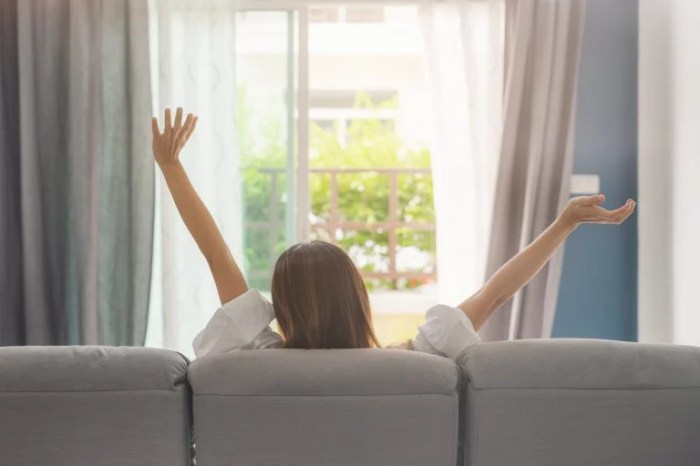
Source: sassytownhouseliving.com
Measuring your windows correctly is crucial for selecting the perfect curtains that not only fit well but also enhance the beauty of your rooms. This step ensures that your curtains hang beautifully, providing the desired privacy and light control while adding an aesthetic charm to your space. Here, we’ll guide you through the essential steps to get the measurements just right.
Steps to Accurately Measure Windows
To begin measuring for your curtains, it is essential to gather the right tools and approach the task methodically. Start by collecting the following items: a tape measure, a pencil, a notepad, and a sturdy step stool if needed.
1. Measure the Width
Begin by measuring the width of your window frame from edge to edge.
For a fuller look, it is recommended to add an extra 4 to 8 inches on both sides of the window frame. This allows the curtains to cover the edges completely when drawn and provides a more luxurious appearance.
2. Measure the Length
Determine how long you want your curtains to hang. There are several lengths to consider
For a casual look, measure from the top of the window frame to where you want the curtains to fall—either just above the sill or to the floor.
For a more formal look, consider measuring from the top of the curtain rod to the floor, or even a few inches beyond for a pooling effect.
3. Consider the Curtain Rod
When measuring for length, don’t forget to account for the height of the curtain rod. The rod should ideally be installed about 4 to 6 inches above the window frame to create the illusion of higher ceilings.
“Heightening the placement of the curtain rod can dramatically change the perception of your room’s space.”
Importance of Considering Ceiling Height
Ceiling height significantly influences the choice of curtain length and rod placement. In rooms with higher ceilings, longer curtains can create a sense of grandeur, while in lower-ceiling rooms, shorter curtains can prevent the space from feeling cramped. To enhance your room’s aesthetics based on ceiling height, adhere to these guidelines:
- For standard 8-foot ceilings, standard curtains can work well.
- For ceilings above 10 feet, consider floor-to-ceiling curtains for maximum impact and elegance.
Checklist for Necessary Tools and Materials
Preparing your tools beforehand will streamline the measuring process. Use this checklist to ensure you have everything you need at hand:
- Tape measure
- Pencil and notepad for notes
- Step stool (if needed for high windows)
- Curtain rod or brackets (if you have already chosen them)
- Level (to ensure correct placement of the rod)
Taking the time to measure your windows accurately results in a better fitting and more aesthetically pleasing curtain choice. Each window has its unique characteristics, and understanding these dimensions allows you to select curtains that truly complement your space.
Style and Design Considerations
Choosing the right curtains extends beyond fabric and color; it also encompasses the overall style and design considerations that contribute to the ambiance of each room. Curtains can enhance the aesthetic appeal of your living space, making thoughtful choices essential for achieving a cohesive look. Understanding the various styles of curtains and their purposes can greatly aid in creating an environment that reflects your personal taste and meets functional needs.Different curtain styles serve unique functions and design purposes.
Some styles are better suited for particular rooms or themes, while others can be layered for an added dimension. Here are some popular curtain styles along with their uses and design implications:
Curtain Styles and Their Uses
When selecting curtains, understanding the specific functions they serve in different rooms is crucial. Here are several common styles of curtains to consider:
- Sheer Curtains: These lightweight curtains allow natural light to filter through while maintaining privacy. Ideal for living rooms and bedrooms, they create an airy feel and can soften the appearance of hard furnishings.
- Blackout Curtains: Perfect for bedrooms or home theaters, blackout curtains block out external light entirely, ensuring a peaceful, dark environment for sleeping or viewing.
- Valances: Typically hung above other curtains, valances add a decorative touch while concealing curtain rods and hardware. They work well in kitchens and dining areas, enhancing the overall decor without heavy draping.
- Panel Curtains: These versatile curtains can be used alone or layered with other styles. They provide flexibility in controlling light and can be adjusted to suit your desired privacy level.
Matching curtain styles with room functions and themes significantly elevates the overall design. For example, sheer curtains in a sunlit living room can create a warm, welcoming atmosphere, while bold, patterned blackout curtains in a child’s room can add a playful touch while promoting restful sleep.
Layering Curtains for Texture and Depth
Layering curtains involves combining different styles, fabrics, or colors to create a rich, textured look. This technique enhances visual interest and can be tailored to suit any room’s theme.To effectively layer curtains, consider the following approaches:
- Combine Sheers with Panels: Layering sheer curtains behind heavier drapes allows for versatility in light control and privacy. This combination works beautifully in bedrooms, as it softens the light while providing options for complete darkness.
- Use Contrasting Patterns: Pairing geometric or floral patterned curtains with solid colors can create a striking balance. Ensure that the patterns complement each other in color and scale to maintain harmony within the space.
- Accessorize with Tiebacks: Adding decorative tiebacks not only enhances the style of layered curtains but also allows for the draping of heavier fabrics to be pulled aside, showcasing the lighter layers and maximizing natural light during the day.
Layering not only adds depth but also allows for creative expression in your home decor.
Each of these layering techniques contributes to a more inviting and dynamic living space. By understanding the various curtain styles and how they can be matched with room themes and functions, you can create an environment that is not only visually appealing but also uniquely yours.
Hardware and Installation Options
Choosing the right hardware and installation method is crucial for achieving the desired look and functionality of your curtains. The right curtain rods, brackets, and installation techniques can enhance your décor while ensuring that your curtains are both beautiful and practical. Understanding these options will empower you to create a polished and inviting atmosphere in each room of your home.
Curtain Rod Types and Their Uses
Selecting the appropriate curtain rod is essential for both aesthetics and function. Different types of rods serve various styles and weights of curtains. Here are the main categories to consider:
- Standard Curtain Rods: These are versatile and suitable for lightweight to medium-weight curtains. They come in various materials, including wood, metal, and plastic, allowing you to match them with your room’s décor.
- Traverse Rods: Ideal for pleated drapes, these rods can easily slide open and closed with a cord system. They are perfect for large windows or sliding doors.
- Double Rods: Perfect for layering sheer curtains with heavier drapes, double rods enable you to create a rich, textured look.
- Odessa or Clip Rings: These decorative rings attach to the curtain rod and allow for easy movement of curtains. They offer a stylish appearance and work well with grommet or tab-top curtains.
- Ceiling-Mounted Rods: For a modern look, ceiling-mounted rods can maximize light and give the illusion of higher ceilings. They are particularly effective in minimalist or contemporary spaces.
Installation Methods for Different Curtain Styles
Understanding how to install your curtains properly can make a significant difference in their functionality and appearance. Here are common installation methods based on curtain style:
- Rod Pocket Curtains: These curtains have a pocket at the top, allowing the rod to slide through. Installation is straightforward; simply insert the rod into the pocket and hang it on brackets mounted on the wall.
- Grommet Curtains: Featuring circular openings along the top, grommet curtains easily slide over the rod. Ensure that the rod width accommodates the grommet size for smooth operation.
- Tab-Top Curtains: With fabric loops at the top, tab-top curtains are secured by threading the rod through the loops. This style provides a more casual look and is easy to install.
- Pleated Drapes: These curtains require a traverse rod or decorative rod with clips or rings. For pleated drapes, precise measurements are vital to ensure proper stacking and movement.
Coordinating Curtain Hardware with Room Décor
Selecting hardware that complements your room’s style elevates the overall aesthetic. Consider these tips for harmonious coordination:
- Match Materials: If your room features wooden furniture, opt for wooden or wood-finished rods. Conversely, metal rods may suit contemporary or industrial designs.
- Consistent Finishes: Ensure that the finishes of your curtain hardware align with other fixtures in the room, such as doorknobs, light fixtures, and furniture legs. Consistency creates a cohesive look.
- Color Coordination: Choose curtain hardware colors that either match or complement your curtains. Neutral rods can blend seamlessly, while bold colored rods can serve as a focal point.
- Decorative Elements: Consider the use of finials or decorative brackets that reflect your room’s style—ornate finials for traditional rooms or sleek, minimalistic designs for modern spaces.
Choosing the right hardware not only enhances the functionality of your curtains but also plays a significant role in the overall ambiance of your space.
Maintenance and Care for Curtains
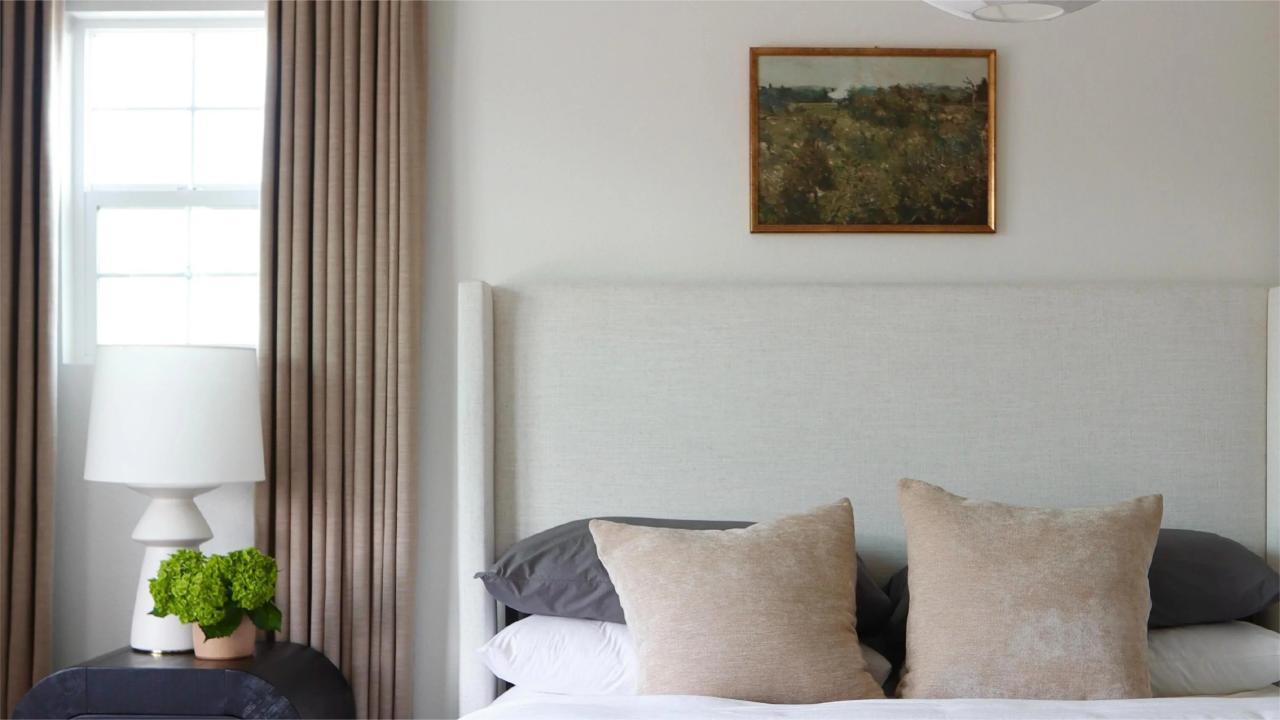
Source: shopify.com
Taking care of your curtains is essential to ensure they maintain their beauty and functionality over time. With proper maintenance, your curtains can enhance the ambiance of your space while standing up to the wear and tear of daily life. Understanding the best practices for different fabrics, managing sunlight exposure, and considering seasonal changes can help keep your curtains looking their best.
Best Practices for Washing and Maintaining Different Fabrics
Different curtain fabrics require specific care to preserve their look and longevity. Here are some guidelines for maintaining popular curtain materials:
- Cotton: Machine wash in cold water on a gentle cycle. Use mild detergent and avoid bleach to prevent fading. For stubborn stains, spot cleaning is recommended.
- Linen: Hand wash or machine wash on a delicate cycle. Air drying is best to avoid shrinkage. Iron while slightly damp for a crisp finish.
- Silk: Dry cleaning is usually recommended to avoid damage. If washing at home, use a gentle detergent and cold water, and avoid wringing out the fabric.
- Polyester: Machine wash in warm water and tumble dry on low. This fabric is more durable and can hold up well to frequent washing.
Taking the time to follow these guidelines can extend the life of your curtains significantly, ensuring they continue to be a source of pride in your home.
Preventing and Dealing with Fading Due to Sunlight
Sunlight can cause curtains to fade, diminishing their color and vibrancy. Here are some practical strategies to prevent and address fading:
- Use Lining: Adding a lining to your curtains can shield the fabric from direct sunlight, protecting it from fading.
- Choose UV-Resistant Fabrics: Selecting curtains made from UV-resistant materials can help minimize light exposure damage.
- Rotate Curtains: Regularly changing the position of your curtains can ensure even exposure to sunlight, which helps prevent localized fading.
- Close Curtains During Peak Sunlight: Keeping curtains drawn during the brightest parts of the day can mitigate fading effects.
Incorporating these practices into your routine will help maintain the vibrancy of your curtains, allowing their beauty to shine through.
Importance of Seasonal Curtain Changes for Maintenance and Aesthetics
Changing your curtains seasonally not only refreshes the look of your rooms but also plays a role in their maintenance. Here are some benefits of seasonal curtain changes:
- Fabric Suitability: Lighter fabrics are ideal for summer, allowing air to circulate, while heavier materials provide warmth in winter.
- Reduced Wear and Tear: Rotating curtains reduces the stress on any one set, prolonging their life and appearance.
- Aesthetic Refresh: Seasonal changes can reinvigorate your space, providing a fresh perspective that aligns with seasonal décor.
- Cleaning Opportunities: Taking down curtains for seasonal change offers an excellent opportunity for deep cleaning.
Embracing seasonal curtain changes can enhance both the aesthetic appeal and longevity of your curtains, making your home feel inviting throughout the year.
Energy Efficiency and Insulation
Curtains are not just decorative elements in our homes; they play a crucial role in enhancing energy efficiency and insulation. In various climates, choosing the right curtains can help maintain comfortable indoor temperatures, thus reducing energy consumption and lowering utility bills. Understanding how to utilize curtains effectively can lead to significant benefits for both the environment and your wallet.Selecting curtains with energy-efficient properties can greatly impact your home’s insulation.
In colder climates, thick, lined curtains can trap heat inside, while in warmer areas, light-reflective fabrics can help cool indoor spaces. The right curtains can create a barrier against the elements, effectively managing the temperature in your home throughout the year.
Types of Curtains for Better Insulation
When choosing curtains for insulation, it’s important to consider the materials and types that offer superior thermal performance. Here are several options that are known for their insulating properties:
- Thermal Curtains: These curtains are specially designed with layers that trap air, creating a barrier to heat loss in winter and heat gain in summer.
- Blackout Curtains: Often made with thick, opaque fabric, blackout curtains block out sunlight and prevent heat from entering, making them ideal for warmer climates or for rooms where sun exposure is high.
- Heavy Drapes: Utilizing heavy fabric such as velvet or wool can enhance insulation by retaining warmth in the winter.
- Cellular Shades: Although not traditional curtains, these shades feature honeycomb designs that create air pockets, providing excellent insulation.
The benefits of using thermal lining in curtains cannot be overstated. Thermal lining adds an extra layer of fabric that enhances the curtain’s ability to insulate. This lining can significantly reduce heat transfer, keeping your living spaces warm in winter and cool in summer.
“Using thermal curtains can reduce heating costs by up to 25% during colder months.”
In addition to energy savings, thermal-lined curtains can improve the comfort of your home. They help to stabilize indoor temperatures and can even reduce outside noise, making your environment more peaceful. As an added bonus, many thermal curtains come in various styles and colors, ensuring you do not have to sacrifice aesthetics for function.
Budgeting for Curtains
When it comes to decorating your home, curtains play a significant role in both aesthetic appeal and functionality. However, finding the right curtains doesn’t have to break the bank. Understanding the costs associated with various curtain styles and materials can help you stay within your budget while still achieving the look you desire.Different curtain styles and materials come with varying price points.
Luxury fabrics like silk or velvet will typically cost more than more common materials like cotton or polyester. Additionally, custom-made options can drive up costs significantly compared to ready-made curtains. Here’s a breakdown of potential costs associated with various styles and materials:
Cost Breakdown of Curtain Options
The choice of curtains involves a variety of styles and materials that affect the overall budget. Here’s an overview of different options:
- Ready-Made Curtains: Prices generally range from $10 to $100 per panel, depending on the quality and brand.
- Custom-Made Curtains: Expect to pay between $100 to $500 per panel, with higher costs for intricate designs and luxury fabrics.
- Fabric Costs: Fabrics like cotton and polyester can range from $5 to $30 per yard, while silk and linen may cost $30 to $100 per yard.
- Hardware and Accessories: Curtain rods, brackets, and rings can add an additional $20 to $200 to your overall expenses.
Achieving a high-end look on a budget is possible through strategic choices. For instance, selecting a neutral fabric can provide a classic look without the hefty price tag often associated with designer brands. Layering curtains, such as pairing sheer panels with heavier drapes, can also add depth and luxury at a fraction of the cost.
Cost-Effective Strategies for High-End Looks
There are several ways to create an upscale appearance without overspending. Consider these tips for achieving the high-end look:
- Thrift and Vintage Shops: Browse local thrift stores for unique and affordable fabric options that can be tailored to fit your needs.
- DIY Projects: If you’re handy, consider crafting your own curtains. Simple sewing projects can save you a significant amount of money.
- Sales and Discounts: Always look for seasonal sales, clearance events, or online promotions. Major retailers often have discounts that can significantly reduce costs.
- Sales Tax Holidays: Take advantage of local sales tax holidays or special shopping events to save on curtains and related accessories.
Finding sales and discounts is essential for staying within your budget while purchasing curtains. Here are practical tips to help you navigate the shopping landscape:
Finding Sales and Discounts on Curtain Purchases
Being strategic about where and when you shop can lead to substantial savings. Here are some avenues to explore:
- Online Retailers: Websites like Wayfair, Amazon, and Overstock frequently have sales and discount codes available.
- Newsletter Sign-ups: Many stores offer a discount for signing up for their newsletters, so take advantage of this opportunity.
- Coupon Websites: Utilize websites that aggregate coupons and deals, allowing you to find additional savings on your purchases.
- Local Home Decor Stores: Don’t overlook small, local shops which may have unique deals and promotions not advertised on larger platforms.
By being aware of the costs, exploring creative options, and seeking out discounts, you can find beautiful curtains that suit your style without stretching your budget.
Final Thoughts
In conclusion, selecting the right curtains is an art that combines personal taste with practical considerations. By understanding fabric types, color psychology, and installation methods, you can create a cohesive environment that reflects your style and meets your needs. Remember, the right curtains do more than just dress a window; they can elevate the entire ambiance of your home.
FAQ Corner
What is the best fabric for living room curtains?
Cotton is often recommended for living rooms due to its versatility, durability, and ease of maintenance.
How do I choose curtain colors?
Select colors that complement your existing décor and consider the mood you want to create; lighter colors can brighten a room, while darker colors add warmth.
Should curtains touch the floor?
Yes, floor-length curtains often create an elegant look, but it depends on your style; puddled curtains add drama, while slightly above the floor can look modern.
How often should I wash my curtains?
It’s advisable to wash curtains every 3 to 6 months, depending on the fabric and dust accumulation in your home.
Can curtains really help with energy efficiency?
Yes, thermal curtains can significantly reduce heat loss in winter and keep rooms cooler in summer, helping lower energy bills.

